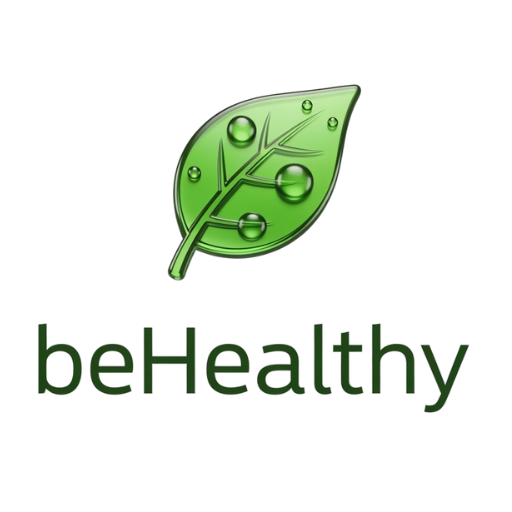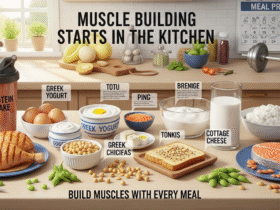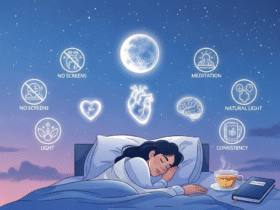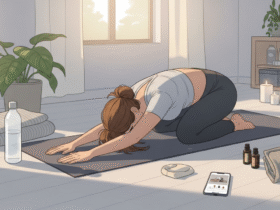At some point, a person can become exhausted—not just physically, but emotionally too. It’s a state that can’t be cured by sleep, nor masked with caffeine. You go through the motions—attending work, keeping your home running, responding to messages, and even smiling when needed—but deep inside, something is off.
You’re worn out, emotionless, and numb. It’s not that you feel physically drained, but more like you’re burnt out.
Burnout doesn’t happen overnight. It creeps up on you slowly, often disguised as being “busy” or simply going through a “phase.” If left unrecognized, it begins to change the way you live, interact, and work.
If you’ve noticed that you’re constantly tired, struggle with concentration, or feel disconnected from the life you once enjoyed, this guide is for you. Below are some key signs of burnout and how to begin healing at home with self-compassion.
What is Burnout? How Is It Different From Stress?
Burnout isn’t just about feeling overwhelmed, overworked, or having a bad day. According to the World Health Organization (WHO), burnout is a condition caused by chronic physical and emotional stress, especially in professional environments.
However, burnout is not limited to the workplace—it can affect anyone. Parents, caregivers, students, freelancers, or anyone under emotional strain can experience burnout.
The key difference between stress and burnout is that:
- With stress, you can still have hope, motivation, and drive, despite feeling overwhelmed.
- Burnout occurs when you’ve completely run out of energy—you no longer have the capacity to care, attempt, or recover.
Signs and Symptoms of Burnout
Burnout doesn’t always shout for attention; often, it whispers. In some cases, it subtly starts closing doors in your life. Below are the most commonly reported emotional, physical, and behavioral symptoms of burnout.
Emotional Symptoms
- Persistent detachment or numbness: Feeling emotionally shut off.
- Helplessness, hopelessness, or autopilot mode: Feeling like you’re just going through the motions.
- Sudden loss of motivation or interest: Things you once enjoyed now feel meaningless.
- Increased frustration, irritability, or anger: Reacting strongly to trivial matters.
- Difficulty experiencing happiness: Struggling to find joy or excitement in anything.
Physical Symptoms
- Chronic tiredness, even after a full night’s sleep.
- Frequent headaches, stiff shoulders, or general body pain: Physical manifestations of emotional stress.
- Digestive problems or nausea: Your body’s reaction to constant stress.
- Changes in appetite: Either no appetite at all or overeating as an emotional coping mechanism.
- Disturbed sleep: Waking up in the middle of the night or struggling to fall asleep.
Behavioral Symptoms
- Time-wasting, forgetfulness, or missed deadlines: Finding it difficult to stay on track.
- Social withdrawal: Isolating yourself from family, friends, or social activities.
- Coping through screens, food, caffeine, or alcohol: Using unhealthy habits to manage stress.
- Cynicism or emotional numbness: Feeling disconnected from those around you.
- Feeling overwhelmed but powerless: The sense that you can’t do anything to change your situation.
When to Slow Down and Listen
Burnout often develops gradually, so the signs can be easy to overlook in the beginning. However, if you recognize some of these symptoms and they’ve persisted for more than a few weeks, it’s time to listen to your body. Slow down, reflect, and consider making space for self-care and healing.
Warning Signs You Shouldn’t Ignore
Burnout: More Than Just Fatigue
Burnout is not simply a matter of physical exhaustion—it’s a deep issue affecting both your mental and physical health. Here are some signs that indicate you may be creeping towards burnout or depression:
Signs You Are Approaching Burnout
- Each and every day feels like a bad day, regardless of what’s happening around you.
- You catch yourself repeatedly thinking, “I can’t do this anymore.”
- You feel disconnected from yourself and others.
- You find yourself crying more easily or feeling numb when you once felt strongly.
- You daydream about quitting, running away, or avoiding your responsibilities.
If you’ve experienced any of these signs, understand this: you are not broken, you are worn out, and recovery is absolutely possible.
Common Causes of Burnout (That Often Go Unnoticed)

Burnout isn’t just about doing too much—it’s also about giving too much, too frequently, without proper renewal or benefit. These non-obvious causes can contribute to burnout:
People-Smoothing and People-Pleasing
- Agreeing to things you don’t want to do.
- Saying “yes” when you really mean “no.”
Perfectionism
- Believing that you should work quickly and flawlessly, without room for error or rest.
Emotional Labor
- Parents, nurses, teachers, therapists, and others who engage in emotional labor are at a higher risk of burnout.
Weak Boundaries
- Checking emails late at night without a genuine “off” time or time for yourself.
Emotional Overwork
- Taking on the emotional burden of others without expressing your own feelings, or feeling responsible for others’ problems.
Understanding these causes is crucial for your healing process. Recovery from burnout isn’t just about preventing it—it’s about rebuilding your inner strength.
Can Burnout Be Healed at Home?
Yes, burnout can be healed at home—at least if you catch it early and commit to rest. However, the healing process isn’t as simple as a weekend spa retreat. It requires gradual, consistent recovery of your nervous system, habits, and sense of self.
The good news is that home can be your healing sanctuary, as long as you’re ready to center your life around relaxation, routine, and self-care.
At-Home Step-by-Step Burnout Recovery
Even if you feel numb or overwhelmed, there’s a path to recovery. Here’s a simple process to begin the healing journey, starting right from your own couch.
Step 1: Label What Is Going On
What you cannot acknowledge, you cannot heal. Many people power through burnout because they believe that admitting they are overwhelmed is a sign of weakness. In reality, acknowledgment is the first step toward recovery.
Try This:
- Journal: Write the words “Burnout is…” and describe how you’re feeling.
- Note the symptoms you’re experiencing right now.
- Take a break: Accept that you are in recovery mode and allow yourself the space to heal.
Step 2: Prioritize Rest — And Learn What Real Rest Looks Burnout Recovery: More Than Just Sleep
Recovering from burnout is not just about getting enough sleep—it’s about nervous system repair. Your body and mind need a full reset, which involves various types of rest, each serving a specific purpose in the healing process.
Types of Rest for Burnout Recovery
There are many forms of rest that contribute to restoring balance:
- Sensory Rest:
Take a break from noise, bright lights, and screen time to give your senses the chance to recover. - Creative Rest:
Allow yourself a pause from productivity. Embrace creativity and play without the pressure of output. - Emotional Rest:
Take a break from constantly being of service to others. It’s important to focus on yourself for a change. - Physical Rest:
Engage in restorative movement, such as stretching or yoga, and allow your body to rest through naps or simply lying down. - Social Rest:
Spend time with people who don’t require you to perform or meet expectations. This helps restore emotional balance.
Rest is not something you have to earn—you cannot function without it. Allow yourself to rest without guilt.
Step No. 3: Reboot Your Daily Rhythm
To stabilize your body and mind, having a regular, peaceful schedule can help you regain balance. Burnout thrives in chaos and confusion, but a soft, structured routine can gently guide you back to equilibrium.
Here’s an easy daily schedule you can use to start rebooting your rhythm:
Burnout Recovery | Daily Schedule
| Time | Activity | Purpose |
|---|---|---|
| 8:00 AM | Wake up + hydration + 5-minute stretch | Gently activate the body |
| 8:30 AM | Light breakfast (protein + fruit) | Blood sugar balance |
| 9:00 AM | Quiet time (journaling or deep breathing) | Emotional grounding |
| 10:00 AM | Light task or walk | Gentle stimulation |
| 12:30 PM | Lunch + unplugged eating | Nourishment + screen break |
| 2:00 PM | Nap or lying down (20–30 minutes max) | Nervous system rest |
| 3:30 PM | Creative activity or soft podcast | Joy without pressure |
| 6:00 PM | Dinner with no multitasking | Reconnect to food and present moment |
| 8:00 PM | Screen-off time, gentle lighting | Prepare body for sleep |
| 9:00 PM | Wind-down ritual (bath, reading, music) | Signal safety to the brain |
| 10:00 PM | Sleep | Deep recovery |
Step 4: Nourish Yourself Back to Life
Burnout often leaves you physically drained, and during this recovery period, it’s important to nourish your body and support your healing. Even if your appetite is low, try to eat small, balanced meals to fuel your recovery.
Helpful Nutrition Tips for Burnout Recovery
- Focus on real, whole foods: Protein, healthy fats, and colorful vegetables are essential for replenishing energy and supporting your body’s repair.
- Hydrate well: Drink plenty of water and replenish electrolytes with options like lemon water and coconut water.
- Avoid energy spikes and crashes: Stay away from sugar, caffeine, and processed foods, as they can lead to energy jitters and worsen burnout symptoms.
- Opt for calming herbs in the evening: Drink sedative herbs like chamomile or lemon balm to help you relax and prepare for sleep.
Food is not just fuel—it plays a crucial role in repairing your body during burnout recovery.
Action 5: Motion Your Body Gently
High-intensity workouts might be counterproductive when you’re burnt out. Your body is already in a stress response, and pushing it too hard could worsen your condition. Instead, focus on gentle movement to help reconnect with your body.
Suggested Low-Intensity Activities:
- Take a slow walk: Avoid distractions like podcasts—simply walk in silence, focusing on the sensation of movement and nature around you.
- Gentle stretching or yin yoga: Focus on slow, deliberate movements that stretch and release tension.
- Somatic exercises: Try activities like shaking, swaying, or tapping to release emotional and physical tension.
The goal is to reconnect with your body in a way that feels freeing and not forced. Movement should be restorative, not punitive.
Action 6: Set Boundaries to Protect Your Energy
Overgiving is a central cause of burnout. Whether it’s emotional labor, perfectionism, or an inability to say no, burnout happens when we give away more energy than we can restore.
How to Set Healthy Boundaries:
Learn to Say No Without Apology
- The word “no” is a complete sentence. You don’t need to explain why you need rest or space.
Soft Scripts for Saying No:
- “I’m not able to take that on right now.”
- “I need some time to rest—thanks for understanding.”
- “I need to check with myself and get back to you.”
Reduce Screen and Notification Overload:
- Turn off notifications and delete unnecessary apps from your phone. Set a rule to stop using your phone after 8 PM to avoid digital overload and restore your peace of mind.
Stop Justifying Your Fatigue:
- You don’t need to convince anyone that you need rest. Honor your body’s request for rest without guilt or explanation.
Action 7: Be a Self-Compassionate Person, Not a Productive Person
Burnout often affects high performers, caregivers, and people who give everything to others. However, recovery cannot happen if you continue to measure your worth by your productivity.
Practicing Self-Compassion During Recovery:
- Allow yourself to nap without guilt: Rest is an essential part of recovery.
- Let the dirty dishes wait: Don’t stress over household tasks while you’re focusing on healing.
- Talk to yourself like you would to a friend: Be gentle and kind with yourself as you recover.
- Affirm your worth beyond productivity: You matter even when you do less.
Affirmations to Support Recovery:
- “I am recovering at my own pace.”
- “Rest is also a form of productivity.”
- “I am not behind. I am rebuilding.”
8. Reconnect With Joy, Slowly and Gently
Burnout often detaches us from the things that once brought us joy. Hobbies, creativity, nature, and connection may all seem dull or distant. Instead of forcing yourself to “feel better,” give yourself space to slowly reconnect with these activities.
Mild Methods for Reopening the Door to Joy
1. Write Down a Joy List
Start by writing down 15 things that once made you feel happy or comfortable. These might seem small or insignificant, but they are key to finding joy again.
Examples could include:
- Sitting in the sun
- A simple cooking routine
- Birdwatching or cloud gazing
- Watching a childhood cartoon again
- Drawing or painting
- Watering plants
Once you have your list, gradually add these activities back into your week, without expecting them to instantly make you feel much better. Joy comes in small doses, and the process of reconnecting will happen at your own pace.
2. Conduct an Action “Just Because”
Recovering from burnout involves breaking free from the survival patterns that keep you constantly busy. Make it a habit to do something just for fun, without any goal or pressure to be productive.
Try activities like:
- Painting or dancing
- Baking or singing (even out of tune)
- Engaging in any non-productive activity that feels playful and freeing
The key is to return to a beginner’s mindset—it’s about exploring and enjoying, without the need for perfection or productivity.
9. Create a Healing Environment at Home
You don’t need a fancy wellness retreat to recover from burnout. With a few thoughtful modifications to your home, you can create a sanctuary for healing and rest.
1. Tackle Physical Clutter
An untidy space can mirror an unsettled mind. Don’t clean up because you feel ashamed of the mess—do it out of love and care for yourself.
Start small—perhaps with just one corner of your home, such as your nightstand or reading nook.
How to begin:
- Light a candle.
- Put on some soft music.
- Carefully tidy up and make the space visually calm and inviting.
2. Smooth Out Your Sensory Inputs
During recovery, your senses need to feel safe and nurtured. Create an environment that calms your body and mind.
Ways to do this:
- Turn off harsh, bright lights and opt for warm lamps or fairy lights.
- Use essential oils or open a window to bring in fresh air and fragrance.
- Snuggle up in a cozy blanket to feel grounded and supported.
Burnout recovery is sensory-based, meaning your body needs to detect signs of safety and comfort. These small changes will help.
3. Install a Nook for Recovery
Create a small sanctuary in your home—a designated space where you can go when you need to rest, reflect, or simply be. This could be a chair, cushion, or corner that’s solely for relaxation and recuperation.
This space helps ground you in healing energy and provides a peaceful retreat when you need it most.
10. Understand the Recovery Timeline
Impatience can be one of the toughest challenges during burnout recovery. You may long to feel like your old self again, but rushing the process can lead to setbacks and relapse.
Instead of forcing a quick recovery, embrace each stage of the process. Even when recovery feels slow or messy, know that it’s part of the journey. Treat each stage with patience and understanding, allowing your body and mind the time they need to heal.
Burnout Recovery Timeline
| Phase | Timeframe (approximate) | What to Expect | What You Need |
|---|---|---|---|
| Collapse/Realization | Week 1–2 | Exhaustion, detachment, fogginess | Full rest, no demands |
| Decompression | Week 2–4 | Emotional swings, irritability, sleep adjustment | Emotional safety, quiet routines |
| Reconnection | Week 4–6 | Glimpses of energy, interest returning | Small joys, structure, support |
| Stabilization | Week 6–12 | Improved focus, mood, creativity | Gentle productivity, balanced effort |
| Integration | Month 3+ | Building new routines that prevent relapse | Long-term boundaries, consistent self-care |
11. When to Seek Professional Support
While healing from burnout can begin at home, it’s important to recognize when you may need additional support. Don’t wait until symptoms worsen or you feel stagnant—professional help can guide you through the process of recovery.
When to Seek Professional Help
If you notice any of the following, it’s time to seek help:
- Chronic hopelessness or emotional disconnection
- Worsening symptoms due to anxiety or depression
- Trouble sleeping more than a few hours a night over several weeks
- Thoughts of violence or fleeing
- Physical health issues (e.g., significant weight change, panic attacks)
The right professional—whether a therapist, coach, or peer support group—can help guide you from survival mode to long-term healing. Seeking help is not weakness—it’s wisdom.
12. Long-Term Tools to Prevent Future Burnout
Once you’ve started the healing process, it’s time to move into the next stage: safeguarding your peace. Recovery doesn’t mean returning to your old burnt-out life; it’s about redesigning your life to sustain well-being.
Here are five sustainable habits to incorporate into your daily routine:
1. Make Rest a Weekly Habit
- Don’t wait until you’re exhausted to take rest.
- Practice downtime as maintenance—it’s not a luxury, but a necessity for your well-being.
2. Tap into Yourself Regularly
Ask yourself, “Am I overloaded?” every week.
- What tasks can you delegate?
- What do you need more of right now?
- Taking time for self-reflection keeps you in touch with your needs and prevents burnout from sneaking back.
3. Guard Your “Yes”
- Each “yes” is a no to something else.
- Only say yes to what aligns with your values and energy levels.
- Learn to protect your energy by making mindful choices.
4. Avoid Overexposure to Emotions
- Take breaks from social media and news that overwhelm or drain you.
- Surround yourself with people who uplift you, rather than those who leave you feeling depleted.
5. Remain Purpose-Driven, Not Productive
- Participate and push forward from a place of contribution and abundance, not out of a sense of duty.
- Ask yourself: Is this energizing me or de-energizing me?
- Focus on purpose rather than the need to constantly be productive.
Summary: You Are Not Broken, You Are Rebuilding
You don’t need to “bounce back” from burnout. You’re not a rubber band.
You are a human being—one who needs to stop, experience, transform, and reconstruct.
Burnout doesn’t mean you’re broken. It simply means that you’ve been pushing yourself too hard, without adequate support. There is no one to blame for your burnout, but you do have the power to choose healing.
Start with one small pause:
- A nap
- A walk
- A simple “no”
- A meal you truly taste and savor
Then take another pause, and keep following presence over pressure.















Leave a Reply